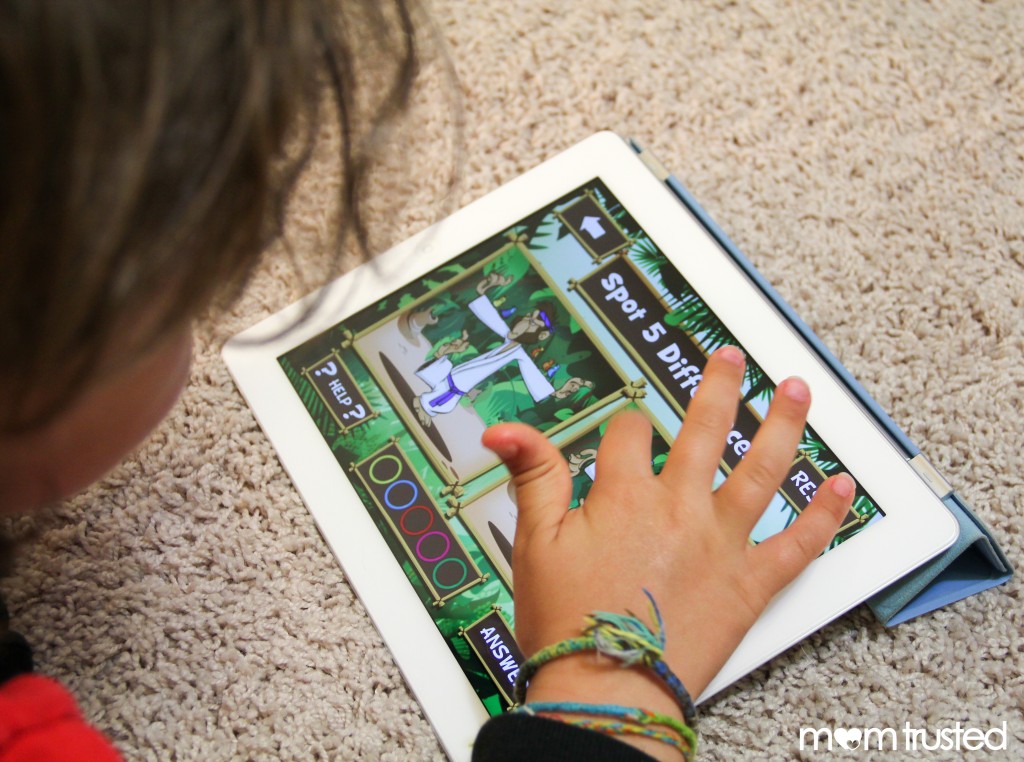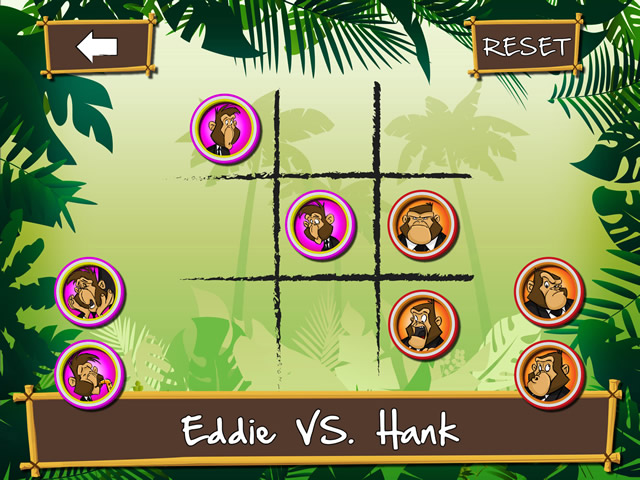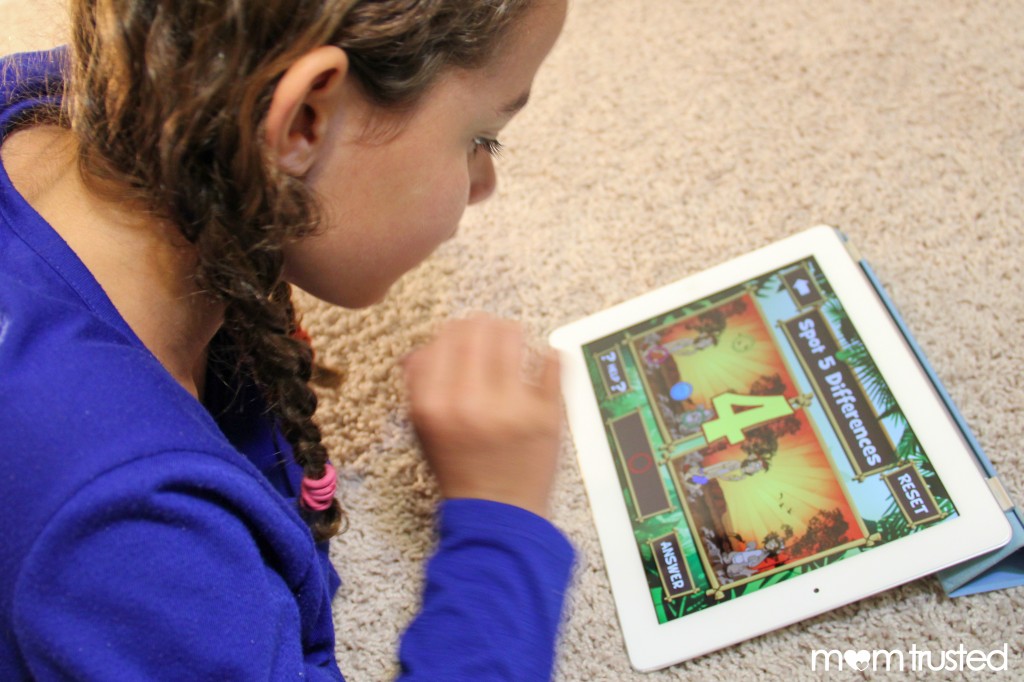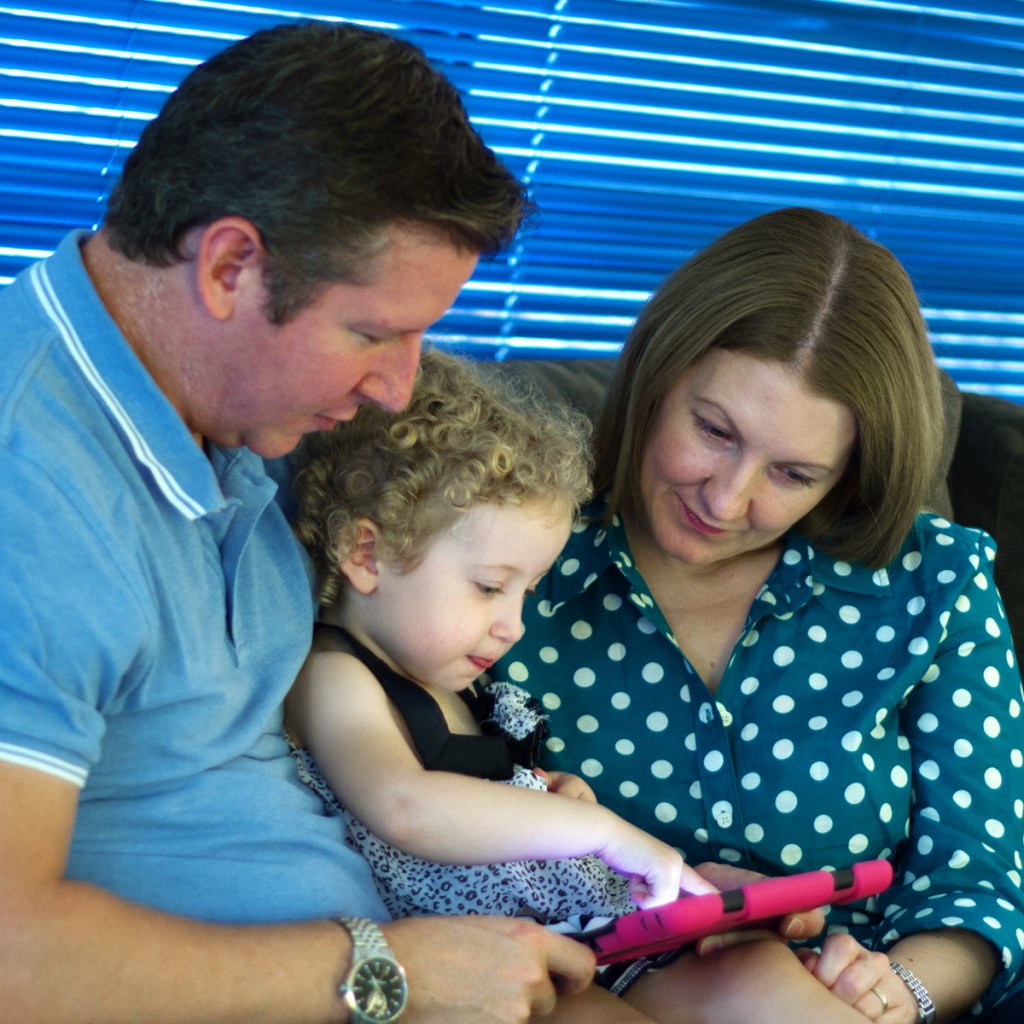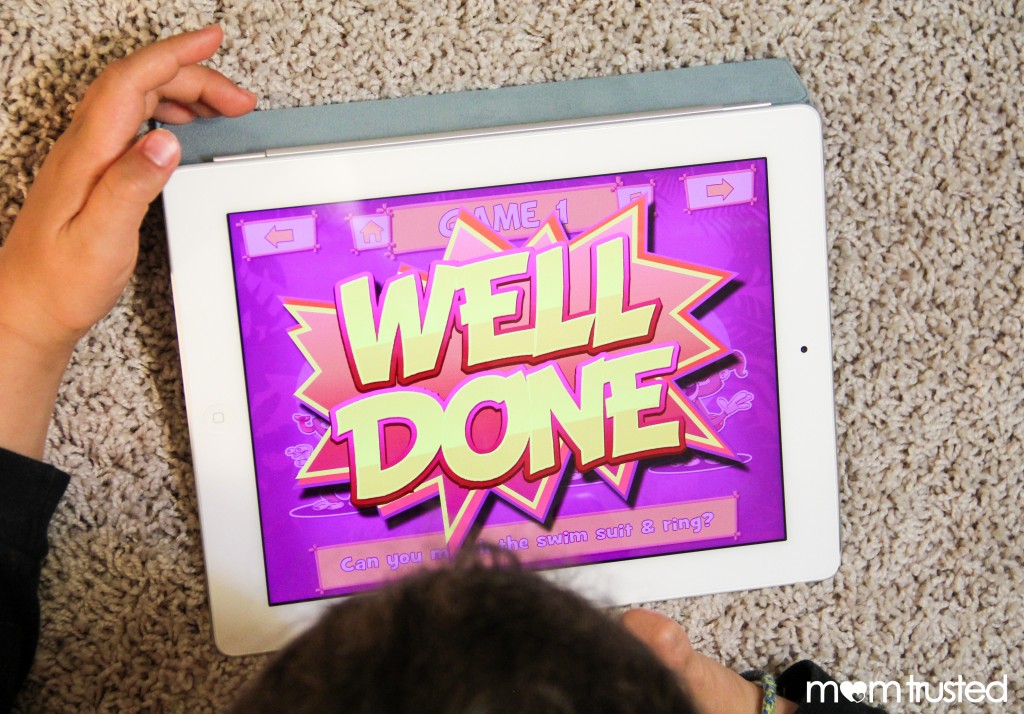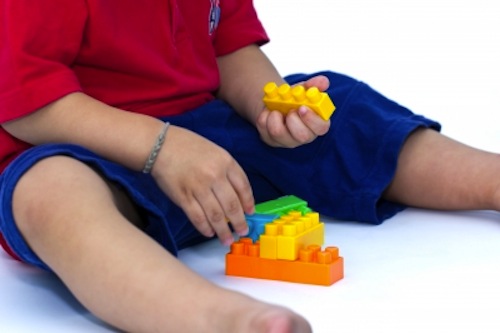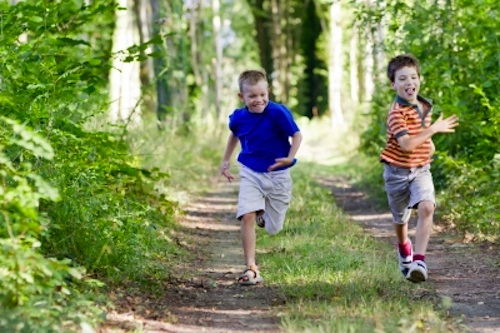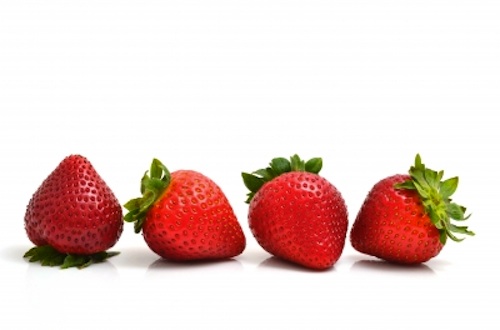Twisted Logic: Brain Boosting Apps for Kids
New app producer Twisted Logic produces one-of-a-kind gaming apps for kids of all ages. The small company is family-run and clearly a passion project, based on the business smart and tech savvy husband and wife team. Together, they create fun, interactive apps that cater to learning as much as they inspire a good time.
So far, Twisted Logic has released three apps, all compatible with iOS and Android products. Their released gaming apps include:
- Monkey Match: Monkey Match is a matching and memorization game with lively illustrations. It helps kids learn by matching shapes, colors, sounds and more. Plus, every level is goal-oriented. It establishes a goal at the beginning of the level and rewards the player after the goal is obtained, all in all making for an engaging game. [itunes download] [android download]
- Monkey Spot the Difference: Monkey Spot the Difference helps little ones hone in on their observation and concentration skills. They look at two images and must compare and pick the differences out of each one. It’s a great game to play with the whole family. [itunes download] [android download]
- TicTacToe Monkeys: TicTacToe Monkeys gives the classic game a fun twist. Players must choose their winning monkey and then duke it out on the Tic Tac Toe board. This game of strategy definitely puts a cute twist on the classic we all grew up playing. It’s a game for all ages. [itunes download] [android download]
In addition to creating fun and educational games, Twisted Logic wants you to feel good about letting your child on their apps. So far the company sticks to an internet safety code for their kids apps that leaves us wanting more from our other kids apps. When downloading you can be sure there are:
- NO In-App Purchases
- NO Third-Party Ads
- NO tracking or collection of user data
- NO requests for personal information
- NO links to the web or social networks without entering a Parent Gate
The creative geniuses behind Twisted Logic make up quite a team. The Head Creator is a creative tech guru who tapped his passion for animation and design and turned it into colorful, creative gaming apps. The Chief Strategist heads the business end of the company, making business-savvy decisions and making sure the company and its workers stay on track. The best part? This family-run business knows exactly what kids want because their daughter Mackensie is the “Senior App Tester” for the company. Her bio reads, “From about the age of 10 months Mackensie has been learning the ins and outs of Apple devices. Currently having her own iPad and two iphones (handed down from Dad) isn’t good enough and she’s always after Dad’s newer devices. Now at the age of 2 years old, finding her way around mobile devices is a breeze. She can even teach her Mum a thing or two…”
Twisted Logic brings creative, colorful apps to the market, developed in a family environment and tested by their own daughter and family friends. This team knows what kids and parents want in an app! Download these apps today!
Teaching Preschoolers About Money
A couple of months ago, in the midst of the government shutdown, the U.S. Treasury started printing new $100 bills. The new bills are more expensive to produce than the ones we’re familiar with. Each bill costs nearly five cents extra to create. In honor of the new $100 bills, we’ve put together a few ideas for teaching preschoolers about money:
New $100 Coloring Page and Lesson Plan
We created a coloring page so you and your kids can decorate your own $100 bills, cut them out, and make play money. Plus we also added in a few other ideas for introducing the concept of currency to your little ones.
Give them an allowance
Parents interested in teaching their children the value of money can give them a small allowance. Even a simple $5 per week will work great. The idea isn’t to give money though. The allowance should teach the value of money, so it works best if little ones need to do some chores around the house to earn it. Maybe they make their bed every day or wash dishes. The idea is to teach them to work for and appreciate their little income and to save for special toys, books or other items that cost more than their allotted income.
Count and sort coins
Counting and sorting change will help teach kids the values of different coins. First, teach the preschoolers the names of each coin. Then, after those have been memorized, introduce their values. Use visuals to your advantage. Put five pennies together, next to a nickel. Then, explain that the five pennies equal one nickel. Do this for each coin and experiment by putting together different combinations.
Order coins
After the preschooler has mastered the monetary value of each coin, make a game out of it. Place coins on a table and have the preschooler sort them from most valuable to least. Then, place different coin combinations on the table and have the child or children do the same activity with groups of change.
Sources:
-“Money Games and Activities” Nick Jr.: http://www.nickjr.com/home-life/kids-money/money-games-activities/money-games-activities_ap.html
-“A preschooler’s allowance” Simple Mom: http://simplemom.net/a-preschoolers-allowance/
-“These New $100 Bills Are Going to be Huge Overseas” BloombergBusinessWeek: http://www.businessweek.com/articles/2013-10-08/these-new-100-bills-are-going-to-be-huge-overseas
Educational Activities for Children with Down Syndrome
Children with Down syndrome develop at a slower rate than most children without Down syndrome. They face challenges, such as being slower to learn how to talk and care for themselves. This certainly doesn’t mean these things are impossible. They just take a bit longer and some extra dedication. Here are some fun, educational activities for children with Down syndrome that will help make learning fun and a little less frustrating for little ones.
Use visuals to learn sounds.
Often, visual learning works best for children with Down syndrome. Sometimes, sign language can help little ones communicate and learn verbal language. You can either learn actual sign language or invent your own. For example, maybe touching the mouth represents hunger.
Take turns.
Teaching a child with Down syndrome to take turns can amplify learning experiences. Communication relies heavily on taking turns, having a listener and a speaker, but sometimes this concept doesn’t come naturally. Demonstrating this turn taking and even verbally communicating “OK now it’s my turn” can help the learning process happen a bit faster.
Use repetition to your advantage.
Studies show that kids with Down syndrome usually need at least a 100-word vocabulary before they start transitioning from one-word statements to multi-word thoughts. Repetition can help accelerate learning to speak. Think of it as an add-on game. If the child says, “Car,” say, “Car. Fast car.”
Sources:
-“Down Syndrome” Kids Health: http://kidshealth.org/kid/health_problems/birth_defect/down_syndrome.html
-“12 Booster Activities for Kids with Down Syndrome” Parents.com: http://www.parents.com/health/down-syndrome/booster-activities-for-kids-with-down-syndrome/
-“Down Syndrome Learning Activities” Pinerest: http://www.pinterest.com/trudycallan/down-syndrome-learning-activities/
-“Top Five Instructional Strategies for Students with Down Syndrome” Special Ed Post: http://specialedpost.com/2013/01/31/top-five-instructional-strategies-for-students-with-down-syndrome/
-Photo courtesy of kdshutterman,/freedigitalphotos.net
Five Ways to Make your Backyard More Fun for Kids
Backyards are prime spots for kids to let lose and run around. Playing outside can spark creativity as well as keep children active all summer long and well into the fall. Here are five ways to make your backyard more fun for kids:
Opt for a mud pit instead of a sandbox
Sand is the best, except for dirt, which has so many play options. With a little water, the dirt can be turned into clay and easily built into castles, cities and whatever else the little ones’ imagination inspires. Add a little more water and you have a messy mud pit. Just remember to hose off before letting them back inside!
Bury PVC pipes
Bury PVC pipes a few inches underground in a section of your garden, sandbox or anywhere else that’s not covered in grass. Make a maze of pipes and your kids will spend hours rolling their toy trucks and cars through them.
Plant a garden
Include the children when planning, planting and harvesting a backyard garden. Not only will they love lending a hand, but growing fresh fruit and veggies has a way of encouraging healthy eating habits.
Paint a chalkboard on your fence
Kids love drawing with chalk on pavement, but what if they could also do it on a special section of your fence? Purchase some chalkboard paint from your local paint store and put at least three solid coat on the desired area of the fence. Then let your kids’ imagination go wild.
Yarn bomb your own backyard
Yarn bombing, the trend of wrapping tree trunks in colorful yarn, has become popular in many urban areas. Why not bring it to your own backyard? Have your kids help pick out the brightest colors and then twist patterns around a few tree trunks in your yard. Not only is it an inexpensive way to add splashes of color to your yard, but the yarn won’t hurt the trees and it’s easy to remove when you get tired of it.
-Photo courtesy of chrisroll/freedigitalphotos.net
Getting Your Kids’ Brains Geared Up for the School Year
The summer may not be winding down quite yet, but you want to make sure your kids’ school brains aren’t either. Use these fun activities to get their minds active and stimulated again. Get your kids’ brains geared up for the school year.
Get reading
Start a family list of books to read and have everyone participate. Then you can discuss favorite stories and authors. Hang a small whiteboard or chalkboard in the kitchen, with a few colorful markers or sticks of chalk. Keep the list running. When someone hears about a new book, they can add it to the list. Select a time to make a weekly trip to the library to check out a few from the board. Think of it as a family book club.
Summer camp
Scope out the educational camp scene in your area. Is there a space or archeology camp your little ones may be interested in? What about a young authors’ writing camp? Check with your kids’ school, community center or local library to see available camps in your town.
Bake a treat
Baking is a great way to keep busy, full and work on some math skills. For slightly older kids, measuring can be great for all sorts of math from adding and subtracting, to multiplying and dividing. For littler ones, baking is a good time to practice newfound counting skills.
Keep crafty
Crafts are the perfect way to both have fun and encourage an active imagination. Take advantage of the sunshine and nice weather by moving craft time outdoors. Plus, that means less mess indoors!
Sources:
-“5 Ways to Keep Your Kids’ Brains Active All Summer Long” Gaiam Life: http://life.gaiam.com/article/5-ways-keep-your-kids-brains-active-all-summer-long
-“Summer Brain Drain: How to Keep Sharp Over the Summer Break” Tutor Doctor: http://tutordoctor.com/blog/blog/summer-brain-drain-how-to-keep-sharp-over-the-summer-break/
-“25 Activities to Keep Kids’ Brains Active in Summer” Education World: http://www.educationworld.com/a_curr/profdev073.shtml
-Photo courtesy of stockimages/freedigitalphotos.net
How to Make Musical Instruments for Kids

Homemade musical instruments are fun to make and to play. Here’s how to make musical instruments for kids:
Homemade Guitars
You’ll need an empty tissue box, a few rubber bands, an empty paper towel roll and a pencil.
Step 1: Have a parent or teacher cut an oval hole in the center of the tissue box.
Step 2: Stretch four rubber bands across the box and the center of the hole.
Step 3:Slide a pencil under the rubber bands, near the top of the box.
Step 4:Tape or glue the paper towel tube to the end that doesn’t have the pencil. This is the guitar’s handle. Strum away!
Check out the Cereal Box Guitars we made here!
Homemade Rainsticks
To make your own homemade rainsticks, you’ll need an empty paper towel roll, dried beans, aluminum foil, a brown paper grocery bag and markers.
Step 1: Trace the circular end of your paper towel tube onto a brown paper bag. Then, trace a circle around the first, making it about two inches larger. Cut one-inch thick straps between the first and second line. Glue the flaps to the paper towel roll.
Step 2: Cut tinfoil six inches wide and 150% the length of the roll. Squish the foil into a long strip and then twist it into a spiraling spring.
Step 3: Place the foil coil into your tube and fill 1/10 of the tube with dried beans. If you don’t have beans, popcorn or dry rice will also work.
Step 4: Repeat step 1 on the open end of the tube.
Step 5: Decorate the tube with markers or paint and let the glue dry.
Homemade Drums
Make your own drums using a cardboard oatmeal container, a brown paper bag and your choice of decorative items, such as glitter, sequins and ribbons.
Step 1: Cut and glue the brown paper bag to fit the outside of the oatmeal container.
Step 2: Have the kids glue decorative items all over the drum.
Step 3: snap the lid on and you’re ready to play!
Science Experiments with Kids: Extracting DNA from a Strawberry
Help your little ones learn about cells and DNA by extracting DNA from a strawberry. Science experiments with kids are a great way to keep you little ones busy and learning at the same time. Plus, they’ll love diving in and playing mad scientist for the day. Strawberries are soft, with huge genomes, making them easy to extract DNA from and a good way to see a large sample. Here’s how to dig the DNA from the strawberries in your refrigerator:
Step 1: Remove the stems and leaves from a strawberry.
Step 2: Smash the strawberry in a sealed Ziplock for a couple minutes. Squishing the strawberry to goo releases the DNA.
Step 3: Mix two teaspoons of dish detergent with one teaspoon of salt and ½ cup of water in a plastic cup. This is your magic DNA extraction juice.
Step 4: Dump two teaspoons of DNA extraction juice into the bag with the mushed up strawberry to help break open the cells.
Step 5: Mash for another minute, but let the parents or older kids take on this task because they have to be gentle as to avoid too many bubbles.
Step 6: Place a coffee filter on top of another plastic cup.
Step 7: Pour the combined strawberry mush and DNA extraction juice into the filter, allowing the juices to filter through and into the cup. Squeeze the filter so the remaining juices drip into the cup.
Step 8: Pour a glass of chilled rubbing alcohol that contains the same amount as your strawberry concoction.
Step 9: Pour the cold rubbing alcohol down the side of the cup, being very careful not to mix or stir the two liquids together. This brings the DNA away from the other stuff in the cells.
Step 10: Watch as the DNA surfaces. It will form a cloudy, white layer on top of the liquid.
Step 11: Use a plastic or wooden kitchen utensil to pull the DNA away from the rest of the liquid.
Thanks to the NIH for this experiment: http://www.genome.gov/pages/education/modules/strawberryextractioninstructions.pdf
-Photo courtesy of antpkr/freedigitalphotos.net
